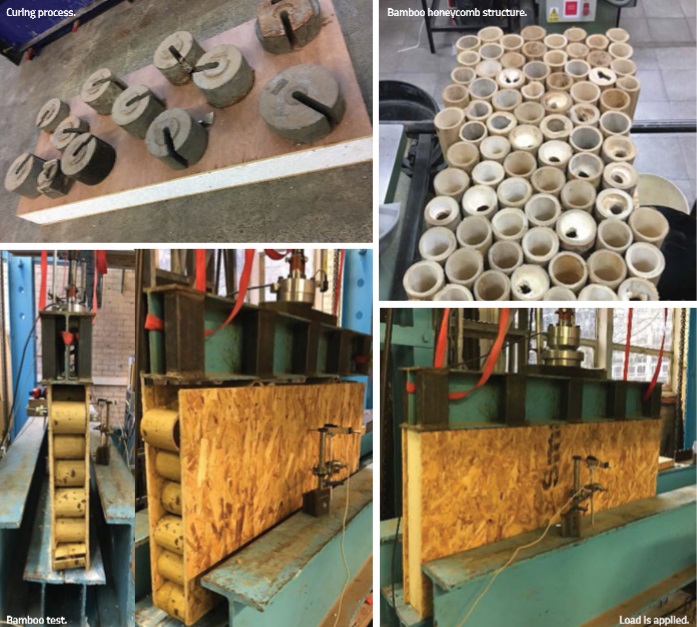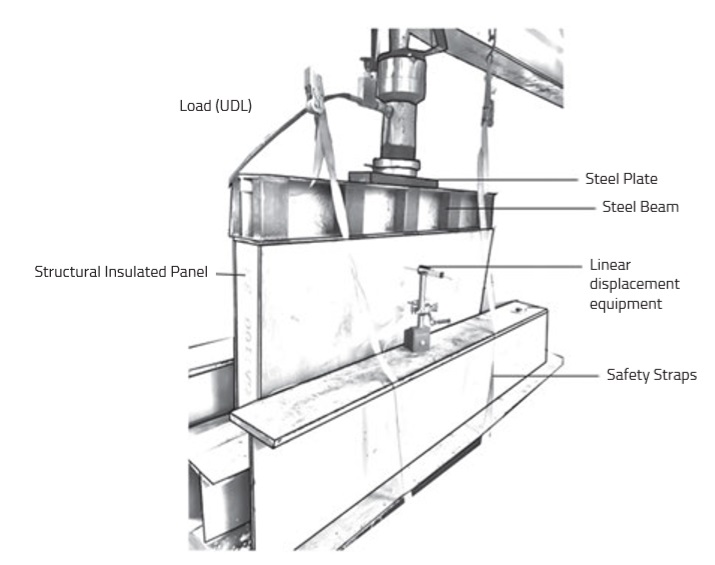Building a safe and therapeutic hospice
The research and its outcomes in 'Building a Safe and Therapeutic Hospice: An Evaluation of Structural and Thermal properties in Structural Insulated Panels' shows how a project can improve user comfort and reduce costs. It was awarded Commended for the Student Award for Excellence in Architectural Technology (Report) 2017. Isabelle Foster writes about her report.
The report aims to investigate how advanced technology and innovative construction methods can be adapted to increase the quality and performance of buildings. The key focus of the report is to showcase how a range of eco-friendly materials for the specific purpose of wall construction, can be used as an alternative way to build future hospices in the UK, and to surmount the challenges that traditionally built hospices face.
In order to ensure that modern hospices meet patients’ requirements, this report explores the benefits of Structural Insulated Panels (SIPs) due to the need for a careful consideration of the control of quality and the improvement of the building’s energy efficiency.
This technical research investigates whether the wall construction of SIPs can achieve a better suited hospice environment, which is suitably adapted to meet the needs of terminally ill patients, and to assess if this pre-fabrication method can compete as the future’s leading method of building in the UK.
In the future, with the advancement of technology and through research, building construction will continue to recognise the development and importance of being an inclusive designer to meet the specific requirement of the end user as well as examining the impact in relation to the environment, functionality and building performance.

In consideration of the brief, I carefully chose to focus on how, through specific design requirements, we as Architectural Technologists can influence social and environmental issues as well as the wellbeing of the community. With a range of materials, I investigated the performance of the construction material as a Structural Insulated Panel and evaluated which combination of materials can provide an energy efficient and high building performance to formulate outcomes that can be applied into the design of a hospice.
Of particular interest during this research were the outstanding benefits that SIPs could potentially add to an exceptional detail in combination with several other components of conventional buildings.
As an Architectural Technologist, I was able to gather structural data analysis, provide U-value calculations and assess the technical specification of each material to understand the key benefits, performance of the panels and also possible technical solutions that can implemented when adapted as a building system.
To further my research, I focused on creating sustainable combinations of SIPs, looking at materials that are environmentally friendly and which can be constructed with an effective improvement of the life cycle of the building. An example of this was the use of bamboo as a honeycomb structure to add strength to the sandwiched panel, it was interesting to see how bamboo can be relatively combined into a structure in many different ways.
The key findings from the results demonstrate that the performance of SIPs qualify them as an effective alternative method of construction and possess adequate factors needed to build a hospice environment that is suitable to meet the needs of patients. This modern method of construction meets the objectives in achieving a controlled quality in construction at a better economic value.
Judges’ comments:
Isabelle’s report explored advanced technology and innovative construction trends, such as modern methods and off-site construction, to improve the comfort of terminally ill patients in hospices through the use of SIPs. The key focus of this report is to showcase how a range of eco-friendly materials for the specific purpose of wall construction, can be used as an alternative way to build future hospices in the UK. Judges commended this research for showing true potential in the field which would greatly improve user comfort, whilst reducing economic and workmanship costs on such projects.
This article was originally published in AT Autumn 2017.
--CIAT
[edit] Related articles on Designing Buildings Wiki
Featured articles and news
Infrastructure that connect the physical and digital domains.
Harnessing robotics and AI in challenging environments
The key to nuclear decommissioning and fusion engineering.
BSRIA announces Lisa Ashworth as new CEO
Tasked with furthering BSRIA’s impressive growth ambitions.
Public buildings get half a million energy efficiency boost
£557 million to switch to cleaner heating and save on energy.
CIOB launches pre-election manifesto
Outlining potential future policies for the next government.
Grenfell Tower Inquiry announcement
Phase 2 hearings come to a close and the final report due in September.
Progress from Parts L, F and O: A whitepaper, one year on.
A replicated study to understand the opinion of practitioners.
ECA announces new president 2024
Electrical engineer and business leader Stuart Smith.
A distinct type of countryside that should be celebrated.
Should Part O be extended to existing buildings?
EAC brands heatwave adaptation a missed opportunity.
Definition of Statutory in workplace and facilities management
Established by IWFM, BESA, CIBSE and BSRIA.
Tackling the transition from traditional heating systems
59% lack the necessary information and confidence to switch.
The general election and the construction industry
As PM, Rishi Sunak announces July 4 date for an election.
Eco apprenticeships continue help grow green workforce
A year after being recognised at the King's coronation.
Permitted development rights for agricultural buildings
The changes coming into effect as of May 21, 2024.























